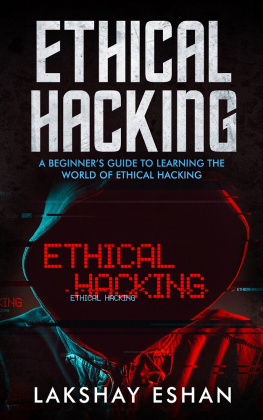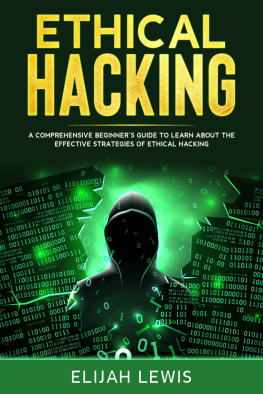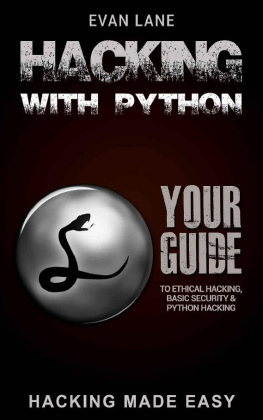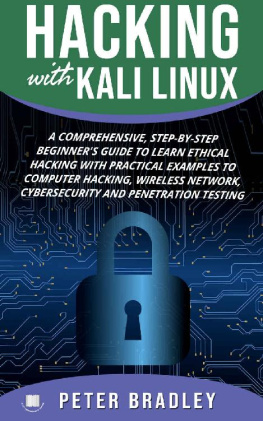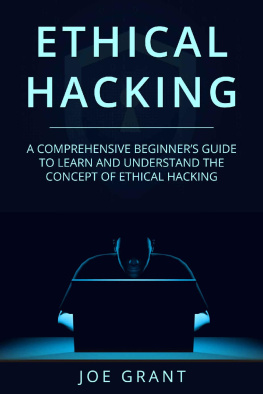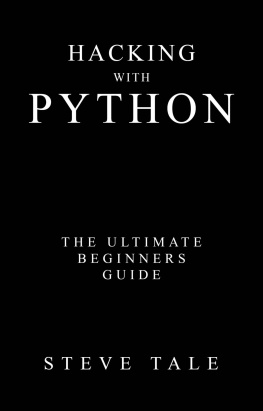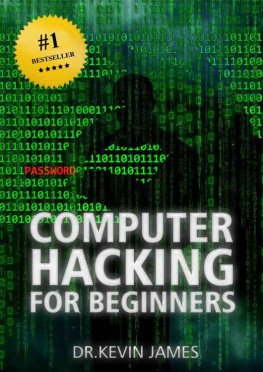Hacking
Hacking Practical Guide for Beginners
By: Jeff Simon
Copyright 2016 by Jeff Simon - All rights reserved.
This document is geared towards providing exact and reliable information in regards to the topic and issue covered. The publication is sold with the idea that the publisher is not required to render accounting, officially permitted, or otherwise, qualified services. If advice is necessary, legal or professional, a practiced individual in the profession should be ordered.
From a Declaration of Principles which was accepted and approved equally by a Committee of the American Bar Association and a Committee of Publishers and Associations.
In no way is it legal to reproduce, duplicate, or transmit any part of this document in either electronic means or in printed format. Recording of this publication is strictly prohibited and any storage of this document is not allowed unless with written permission from the publisher.
All rights reserved.
The information provided herein is stated to be truthful and consistent, in that any liability, in terms of inattention or otherwise, by any usage or abuse of any policies, processes, or directions contained within is the solitary and utter responsibility of the recipient reader.
Under no circumstances will any legal responsibility or blame be held against the publisher for any reparation, damages, or monetary loss due to the information herein, either directly or indirectly.
Respective authors own all copyrights not held by the publisher.
The information herein is offered for informational purposes solely, and is universal as so. The presentation of the information is without contract or any type of guarantee assurance.
The trademarks that are used are without any consent, and the publication of the trademark is without permission or backing by the trademark owner. All trademarks and brands within this book are for clarifying purposes only and are the owned by the owners themselves, not affiliated with this document.
Introduction
I want to thank you and congratulate you for downloading the book, Hacking: Hacking for Beginners.
This book contains proven steps and strategies on how to learn the fundamentals of hacking.
This eBook will teach you the basic principles of hacking. It will explain the three types of hackers as well as the tools that you can use. It will give you a detailed study plan on how to improve your skills and knowledge in a short period of time. In addition, this book will teach you how to use the Python programming language.
An entire chapter is dedicated to penetration testing. That chapter will explain the different parts and requirements of an effective test. Additionally, that material will arm you with specific tools and techniques that you can use in your own pen tests.
The lessons that youll find in this book rely on an operating system called Kali Linux. Kali is the preferred OS of hackers and penetration testers. This OS contains an extensive collection of hacking tools. With Kali, you wont have to download and install extra programs. You can use it as is.
This eBook will also discuss defense-oriented topics such as malware protection. This way, youll know what to do in case you have to attack a target or thwart a hackers efforts.
If youre looking for a comprehensive book about basic hacking, this is the book you need.
Thanks again for downloading this book, I hope you enjoy it!
Table of Contents
Chapter 1: The Fundamentals of Hacking
There are three types of hackers:
- White hat
- Black hat
- Gray hat.
A white hat (also known as ethical) hacker tries to breach network systems in order to help businesses and organizations in improving their digital defenses. A black hat hacker, meanwhile, accesses digital records and/or devices for malicious purposes. A gray hat hacker is a combination of the first two types: he may be a white hat this time and become a black hat in the next.
Important Note: There are laws that prohibit black hat hacking. You can get incarcerated if youll try to access digital information without the owners permission. Because of that, this book will help you become an ethical hacker. It will provide you with tips, tricks, and techniques that you can use in hacking systems ethically.
Benefits of Ethical Hacking
To protect yourself from thieves, you need to think like one. This principle serves as the core of white hat hacking.
The total number of hackers is growing each day. And these people are on a continuous quest to improve their skills and expand their knowledge. If you will consider the vulnerabilities that exist in machines and digital networks, you will realize the awful state of security that people have against hackers. You need to protect your system from the bad guys. To achieve this goal, you should know how to hack.
The goals of a white hat hacker are:
- Attack a system without destroying it
- Identify system vulnerabilities
- Prove that vulnerabilities exist
- Help in improving the security of his target
Different Types of Hacking Attacks
Hackers divide their attacks into different types. These types are:
Nontechnical
These techniques focus on the end-users (i.e. the people who use the target devices). Because humans have a natural tendency to trust others, hackers can break through a systems defenses without using any electronic tool. These hackers may use social engineering tactics to obtain a users trust and gain access to a network or file. Youll learn more about social engineering later on.
A hacker may also implement a physical attack against his target. For instance, he may break into a computer room and access one or more devices that are present. As an alternative, he may check the dumpsters in the building and try to look for useful information (e.g. passwords). Hackers refer to this approach as dumpster diving.
Network
Hackers can implement this kind of attack easily, since most networks are accessible through the internet. The most common forms of network attacks are:
- Accessing a network using a rigged modem
- Taking advantage of vulnerabilities in digital transport mechanisms (e.g. NetBIOS)
- Sending a continuous stream of requests to a network
- Rigging the system and collecting data packets to access confidential information
Operating System
These attacks play an important role in any hackers toolkit. Thats because each computer has an operating system. And there are a lot of tools that you can use to crack the OS (i.e. operating system) of a computer.
There are a lot of operating systems out there. However, hackers usually focus on the most popular ones (e.g. Windows systems). Here are some of the OS attacks that you can use:
- Destroying the security of a file system
- Deciphering passwords
- Attacking pre-installed authentication mechanisms
- Taking advantage of vulnerabilities in certain protocols
Application
Some hackers utilize computer programs to attack networks. Often, a hacker gains access to a machine through a web-based application or an email-related program. The most popular members of this type are:
- Sending spam (i.e. junk mail) to people
- Installing malware (i.e. malicious software) in target systems
- Bypassing security mechanisms (e.g. firewall) through online protocols (e.g. SMTP, HTTP, IMAP, etc.)
Chapter 2: Hacking - A Guide for Beginners
There are many learning materials for hackers. Most of these materials are free, so you wont have to spend any money just to develop your hacking skills. Unfortunately, most of the hacking resources that youll find are created for intermediate and/or expert hackers. You wont benefit from the said materials if you are a complete beginner.


